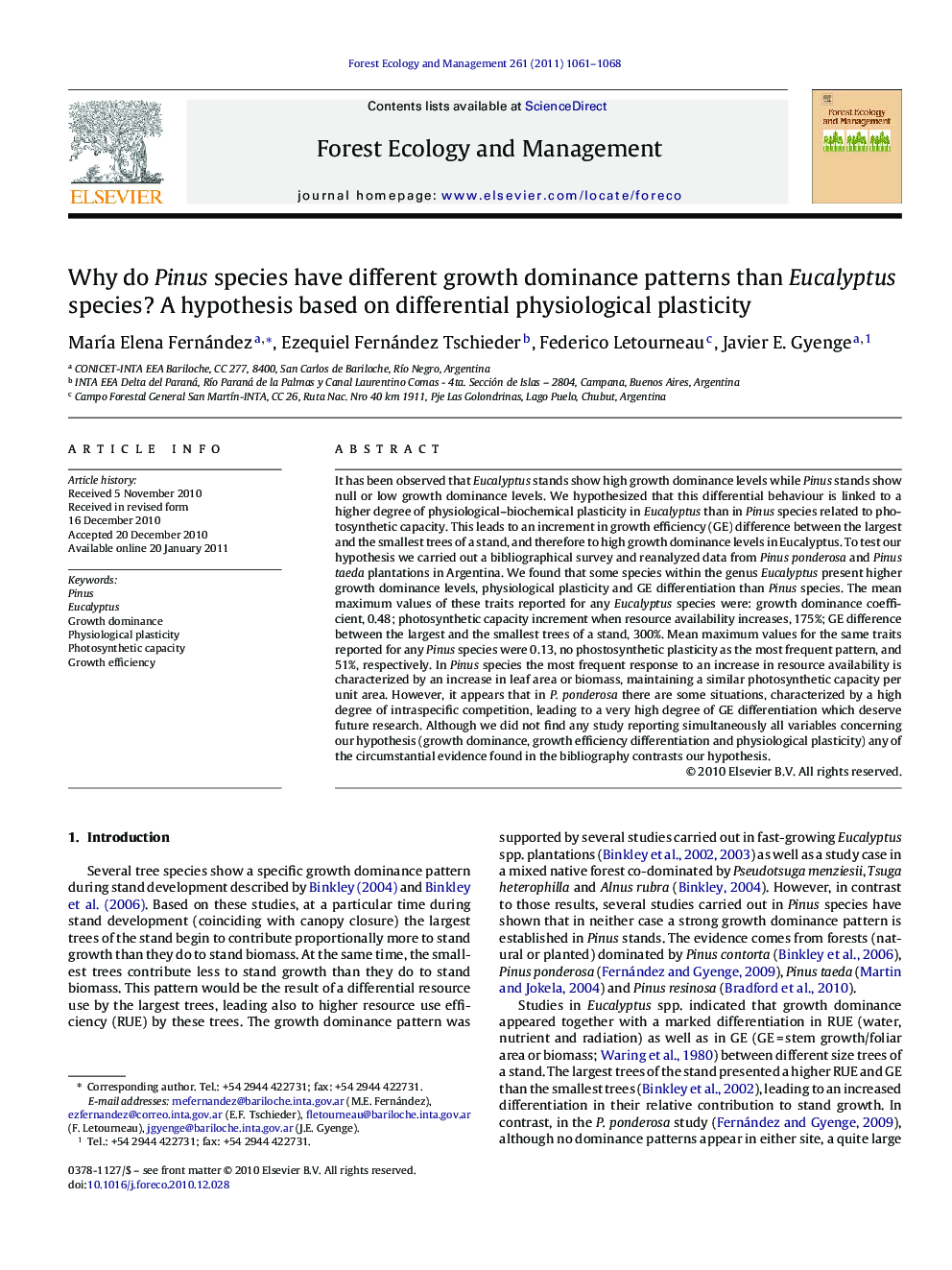| Article ID | Journal | Published Year | Pages | File Type |
|---|---|---|---|---|
| 88248 | Forest Ecology and Management | 2011 | 8 Pages |
It has been observed that Eucalyptus stands show high growth dominance levels while Pinus stands show null or low growth dominance levels. We hypothesized that this differential behaviour is linked to a higher degree of physiological–biochemical plasticity in Eucalyptus than in Pinus species related to photosynthetic capacity. This leads to an increment in growth efficiency (GE) difference between the largest and the smallest trees of a stand, and therefore to high growth dominance levels in Eucalyptus. To test our hypothesis we carried out a bibliographical survey and reanalyzed data from Pinus ponderosa and Pinus taeda plantations in Argentina. We found that some species within the genus Eucalyptus present higher growth dominance levels, physiological plasticity and GE differentiation than Pinus species. The mean maximum values of these traits reported for any Eucalyptus species were: growth dominance coefficient, 0.48; photosynthetic capacity increment when resource availability increases, 175%; GE difference between the largest and the smallest trees of a stand, 300%. Mean maximum values for the same traits reported for any Pinus species were 0.13, no phostosynthetic plasticity as the most frequent pattern, and 51%, respectively. In Pinus species the most frequent response to an increase in resource availability is characterized by an increase in leaf area or biomass, maintaining a similar photosynthetic capacity per unit area. However, it appears that in P. ponderosa there are some situations, characterized by a high degree of intraspecific competition, leading to a very high degree of GE differentiation which deserve future research. Although we did not find any study reporting simultaneously all variables concerning our hypothesis (growth dominance, growth efficiency differentiation and physiological plasticity) any of the circumstantial evidence found in the bibliography contrasts our hypothesis.
Research highlights▶ Pinus species present low growth dominance patterns compared to Eucalyptus species. ▶ A hypothesis is proposed relating dominance pattern with differential physiological plasticity. ▶ Circumstantial evidence is presented supporting the hypothesis.
